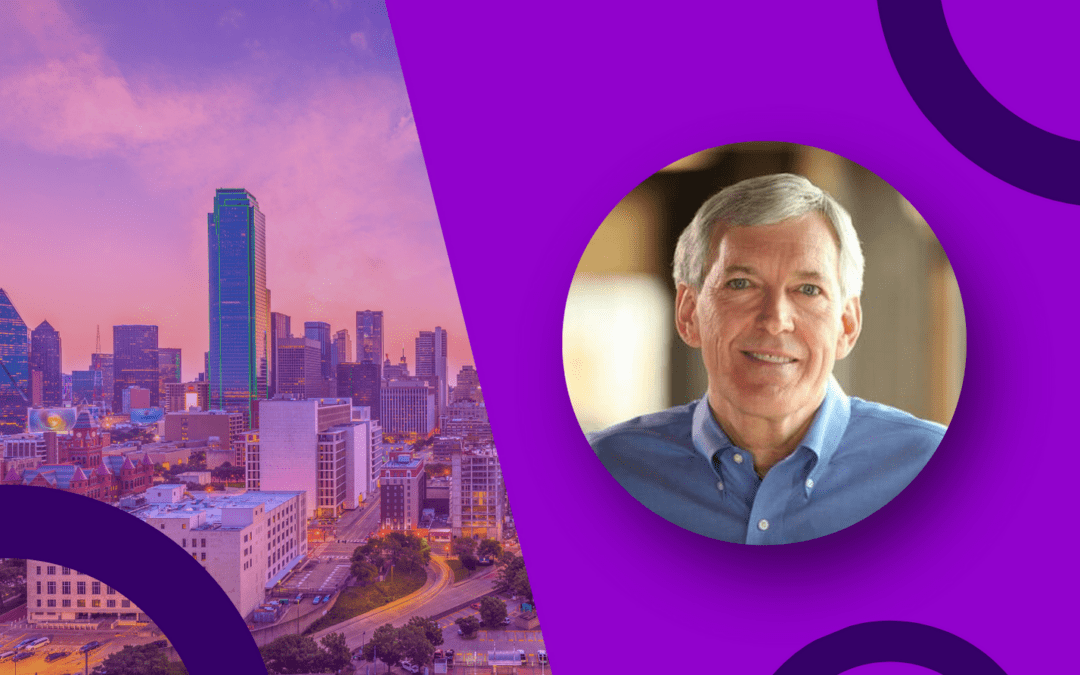The future of talent is arguably one of the biggest determining factors of how the future of work unfolds in North America. Talent drives the workforce, and how we source skilled workers in a labor shortage that continues to persist is one of the biggest challenges facing businesses today.
How We’re Helping Businesses Build a Better Workforce
Future-proofing your company amidst an ongoing labor shortage includes establishing a working pipeline to untapped talent pools. In Felix Global’s The Future of Work and Life 2.0 HR Symposium, guest panelists Jeff Korzenik and Roberta McQuade discussed how and why HR leaders should be tackling the labor shortage and supporting second-chance hiring.
What’s Causing the Labor Shortage That’s Affecting the Future of Talent?
As a successful Chief Investment Strategist, author, speaker and overall economic explorer, Jeff sees two difficult factors contributing to the labor shortage that is affecting the future of talent:
1. A Falling Fertility Rate
Fertility rate is the average number of children born to women over the course of their reproductive years. For example, the current U.S. fertility rate is at 1.782, but in 1960 and at the tail end of the baby boom, there was a fertility rate closer to 3.6 – this kept the workforce healthy until now.
According to Jeff, while we’d ordinarily be able to supplement some of the loss in the workforce through immigration, the current U.S. immigration policy, paired with the low fertility rate, will not be enough to fill the growing worker gap.
2. Increased Retirement Rates
The risks to the future of talent caused by America’s falling fertility rate are compounded by the fact that the Covid-19 pandemic sped up the retirement of the baby boomer generation from the workforce. As Jeff explains, the labor force expected to lose 10,000 people a day due to retirement, but with the onset of the pandemic, it added another 2.4 million by October of 2021.
The other issue is that when people leave the workforce at an older age and earlier than initially intended, they do not tend to come back to work. So, in addition to the number of people permanently leaving the workforce due to the pandemic and its effects on the future of talent, there is now the challenge of having more people on long-term unemployment.
How Do We Solve the Labor Shortage and Ensure Success?
As Jeff points out, there is no single solution to the labor shortage; rather, it will take a multi-faceted, collaborative approach to secure the future of talent that will drive the U.S. and other countries forward.
In particular, one part of the solution revolves around diving deeper into the American population to make sure that everyone who is able and willing to work can not only land a job but also can land a job that allows them to contribute to the economy to their fullest potential. In other words, it is not just about getting people into the labor force, it’s also about giving them the economic mobility to move up in their careers.
Here are several solutions Jeff and Roberta argue could lead the way to a stable future of talent:
1. Second-chance Hiring
For Jeff, finding a solution that supports the future of talent largely comes down to getting those who have been excluded from the workforce back into the workforce.
One way to do this is the focus of Jeff’s book Untapped Talent: How Second Chance Hiring Works for Your Business and the Community, which is the idea of hiring people with criminal records. This is now a growing movement, according to Jeff, that is seeing a lot of momentum in the business and non-profit communities. For example, the Second Chance Business Coalition is an organization comprised of large private-sector firms that work to connect businesses and companies with second-chance hires.
Jeff recognizes that while there are some challenges in doing second-chance hiring right, it’s also an exciting opportunity to not only address the future of talent but also address some of the major social challenges that we have in cities, states and the country as a whole. That is because gainful employment solves a lot of the social ills that have also stood in the way of our workforce.
2. Improving the Talent Process and Finding Effective Talent Partners
If we are to solve the challenges affecting the future of talent, then we have to look closer at not just who we hire but how we hire. Specifically, Jeff draws attention to the issue of how you judge someone when all you know about them might be their criminal record or when you see they have a large gap on their resume from when they were incarcerated.
As Jeff points out, solving this still ultimately comes down to a standard talent concept: you need to find the people who are going to be a good fit for your company and then give them the tools to thrive. When we apply this to second-chance hiring, companies need to nail down a talent process that accurately identifies who is ready for that second chance or who has earned the right for that second chance.
Typically, the businesses that do this process well, whether large or small, are those who work with non-profit partners to connect them with appropriate second-chance hires. The reason non-profits are a great partner for this that they get to know these candidates better than hiring managers could in a reasonable application process. They are also able to ask questions that hiring managers are legally not allowed to ask.
But of course, not all non-profit partners are created equal. Jeff explains that success with second-chance hires means building a partnership with a non-profit that is holistically invested in helping to build the person’s life skills, measuring their success not with placements achieved but with the longevity of the employee placed.
Because it’s not easy to find these community partners and non-profits, you have to cast a wide net. Workforce boards, the American Job Center, even a local church – there really is no one-size fits all approach, and a lot of partnerships can come from localized support.
3. Giving Workers the Tools They Need To Succeed
If we’re to secure the future of talent in North America, then we need to ensure our workers are set up for success. This is particularly important when it comes to second-chance hires. Their success is largely based on helping them gain the tools and behaviors necessary to thrive in a work environment that they may not be familiar with, which includes being able to dress appropriately, showing up on time and how to take constructive feedback from a supervisor.
Unfortunately, a lot of the people caught up in the justice system entered the system when they were young and never had the benefit of having these characteristics modeled for them in their lives. We also have to remember that this is a population that may not know how to reach out for the tools that will help them succeed.
Some companies will approach this in their hiring process by saying they will look for people who are more established and, say, 10 years out from their previous incarceration. But other companies who want to establish a steady connection to this population of the workforce will hire life coaches for their entire employee base, which can be a critical benefit for those with criminal records.
Jeff notes this is a truly positive investment in the future of talent that pays back dividends, giving those companies very loyal and engaged employees. And engaged employees are more productive employees, which in turn boosts profitability.
The Additional Benefit of Second-chance Hiring
Currently, there are over 70 million Americans with a criminal record, and unfortunately, the burden does not fall equally on all communities. For example, Jeff highlights that one in three black men in the U.S. has a felony conviction. So, our current workforce does not reflect our community, and the future of talent will continue to not reflect our population unless on-ramps are built for these populations.
Business leaders especially need to check their company bias related to how they think about these individuals who have had interactions with the justice system and really reimagine how they work and engage.
While Jeff notes that he doesn’t pitch second-chance hiring as primarily a DE&I (Diversity, Equity and Inclusion) initiative, he does note that it does have other social benefits outside of building a sustainable future of talent. For example, it also helps to transform company culture and individual mindsets. You start to broaden your mind and think of the world differently, not just in regards to talent, but broader subjects as well, like also being more environmentally responsible.
Case Study: JPMorgan Chase
While banks, in particular, have historically been unable to hire those with previous convictions for regulatory reasons, JPMorgan Chase announced they recently hired thousands of people with criminal records.
As Jeff explains, JPMorgan Chase focused on the narrow window of exemptions and continued to build pipelines to access these workers. As the nation’s largest bank, JPMorgan Chase is showing great leadership and is dispelling common objections companies would have to second-chance hiring, which includes the notion that it is a reputational risk resulting in people not wanting to do business.
Other examples and case studies can be found in Jeff’s book, Untapped Talent: How Second Chance Hiring Works for Your Business and the Community.
So, How Can HR Leaders Prepare?
When it comes to the future of talent, it’s clear that HR leaders need to be thinking about what questionsthey should be asking themselves related to these new talent opportunities that they’ve not been asking in the past. Specifically, what can HR leaders start doing to help solve these challenges of future needs?
1. Make an Inclusive Talent Process
Jeff thinks there first needs to be a top-to-bottom review of the talent process to address the ways we limit the chances of applicants. It’s clear we are never going back to the days of having an abundant labor supply, so with a lot fewer applicants applying for positions and more jobs to fill, we have to look at how we’ve managed applicants in the past and the exclusions we’ve built into our applicant tracking software.
Specifically, we need to focus more so on inclusions. For example, not excluding people with gaps in employment, which we would see with those who’ve been incarcerated or those who took time off to care for children or elderly parents. By
Staying committed to excluding people with a criminal record, you may also be excluding someone who is eager to prove they are worth more than their worst mistake, and they may end up being your best employee.
2. Build Flexibility
Ultimately, if we’re to start hiring people from different backgrounds into the labor force while supporting our current labor force and setting them all up for success in a future that requires us to now do things differently, Jeff believes that we have to build our ability to be flexible. A lot of the solutions that will secure a stable future of talent for the workforce come from unconventional ideas that require flexibility in both process and thinking.
3. Support a Culture of Belonging
The future of talent will need to be as diverse as ever, so we also have to expose employees to other workers who may have led different lives, look different, or come from different backgrounds. It is about building a culture of belonging and seeing that success comes in many different forms.
Luckily, there are a couple of clear tactics that can help accomplish this:
Communicate the Realities
As a Private Equity HR Exec and Advisor, Roberta McQuade explains that part of building this culture of belonging successfully is tied to educating people about the realities of the labor shortage. Particularly, managers and executives really have to understand the nature of what’s going on in the workforce and have to learn how to communicate effectively with an incredibly diverse workforce.
Show Care for Workers
Roberta also points to the fact that creating a culture of belonging is tied to breeding this understanding, consideration and caring for workers that helps them understand where they fit and why they’re there. If you do that and do it right, retention will follow. This also helps to attract talent because the workers of today and the Gen Z workers who will define much of the future of talent want to learn and understand everything.
The Next Step: Getting CEO & Executive Buy-In
The ownership over the future of talent and tackling the labor shortage doesn’t just fall to HR leaders; rather, they also have to think about how they can get CEOs and other members of the executive leadership team to explore and adopt these new approaches to solving the labor shortage.
As Roberta explains, the key to achieving this is to present CEOs and executives with the facts of the labor force and labor shortage that’s been discussed, making clear the changes and challenges we’re now facing in both the future of work and the future of talent. HR leaders need to show that they can use these approaches to solve the problems CEOs and executives are having, as they are often driven by results and problem-solving.
Jeff goes on to highlight that HR leaders will also want to explain how CEOs and executives need to support their HR teams in dealing with the need to now do things differently. Ultimately, it comes down to empowering them to take the risks necessary to get the positive results that will transform their business.
Future-proof your business by tackling the challenges of the future of talent now with the help of Felix Global.
Discover how the team at Felix Global is helping organizations meet the challenges of a changing labor market by contacting us today.



